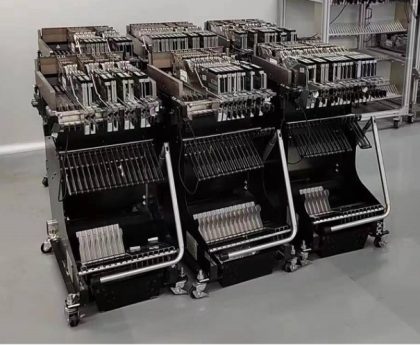In SMT chip processing and production, it is often necessary to take electrostatic protection measures for the assembly of electronic products to reduce the damage to electronic products. The specific methods of electrostatic protection are:
(1) Reduce product friction
In the rotating device of the production line, it is necessary to reduce the slipping of the conveyor belt and other moving parts. The transmission belt should be properly tightened to avoid overload. The selected belt should also use conductive tape or triangular tape with high rotation efficiency or conductive triangular tape with high transmission efficiency.
(2) Anti-static environment
During SMT production and assembly, a good anti-static production line is required. The production platform should be an anti-static workbench, and the anti-static table mat should be paved on it to reduce the hardness of the table from the page to provide convenience for SMT processing. The anti-static floor should also be used on the ground. The SMT assembly personnel should wear anti-static clothes, hats and shoes. The entire workshop environment should be clean and tidy, and all equipment and tools should take anti-static measures as far as possible.
seventeen
(3) Leakage and grounding
It is necessary to ground the place where static electricity may be generated or has been generated. Its purpose is to conduct electricity for the static electricity that may be generated or has been generated and release the static electricity. It uses the method of burying large ground wire to establish an “independent” ground wire. It is necessary to note that the resistance between the ground wire and the ground should be less than 10 Ω. The l M Ω resistor in series is used to better ensure that the current to the ground is less than 5 mA, which is called soft grounding. The shell of the equipment and the shield of the electrostatic screen are usually used for direct grounding, which is called hard grounding.
(4) How to eliminate static electricity on conductor
The static electricity on the conductor can be discharged to the ground by grounding. In the anti-static process, the leakage time of static electricity is required to be within 1 s, and the voltage should be reduced to a safe area below 100V. It can prevent its leakage time from being too short, and the leakage current is too large to cause damage to the static sensitive device.
(5) Elimination of non-conductive static electricity
For the static electricity on the insulator, since the charge cannot flow on the insulator, the grounding method cannot be used to eliminate the static electricity. The ion blower (gun) can be used. ② Use static electricity remover. ③ Control the ambient humidity. ④ Adopt electrostatic shielding
(6) Process control method
The process control method is to take preventive measures in the process of material selection, installation and production operation, so as to control the generation of static electricity and the accumulation of electric charge, and minimize the static charge generated in the SMT production process, so as to achieve the purpose of reducing the harm.
In the process of SMT processing and production, the generation of static electricity is inevitable. We can reduce the protection of static electricity in various ways and control the harm of static electricity in an effective range. In addition to the various methods mentioned above, some anti-static signs need to be pasted in the production workshop. It is also important to check the temperature and humidity of the workshop regularly. Workshop personnel need to wear anti-static clothes/shoes and wear anti-static wrist strap when entering the production line, which are essential in the electrostatic protection system.





